Below you can see a demonstration of creating and cutting mortise and tenon joinery using the tool's design features:
Circle is one of the most fundamental tools on Origin. You can use the circle tool to create circles of arbitrary size, making it a great replacement for a large drill bit or a hole saw. When used in concert with the grid tool, the circle tool can make quick work of a line of circles spaced evenly apart.
To get started with your first circle, switch to the Design mode and tap the Create icon.
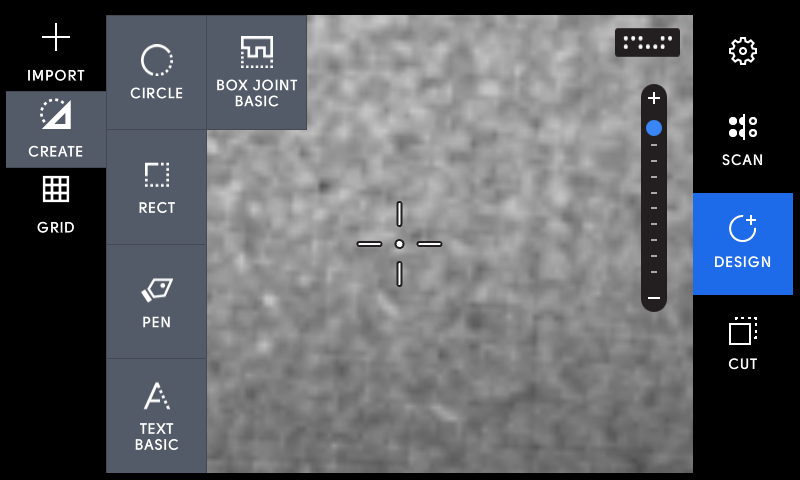
You can create a circle in a number of ways:
Creating Circles of Arbitrary size
Tap Start Circle or press the green button and drag out a circle of an arbitrary diameter. This mode is especially useful when referencing lines drawn on your workpiece.
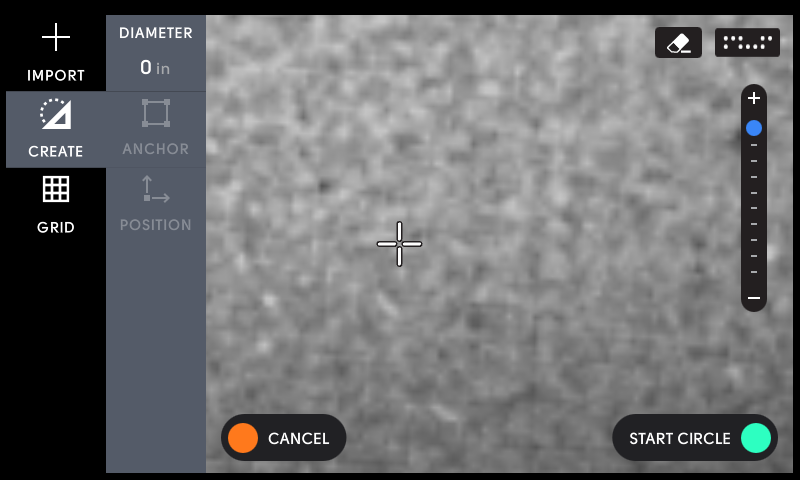
Tap Place to place the circle on your workpiece.
Creating Circles of Specific sizeTap the Diameter option to reveal a keypad. Entering the desired diameter here will allow you set a precise size for your circle.
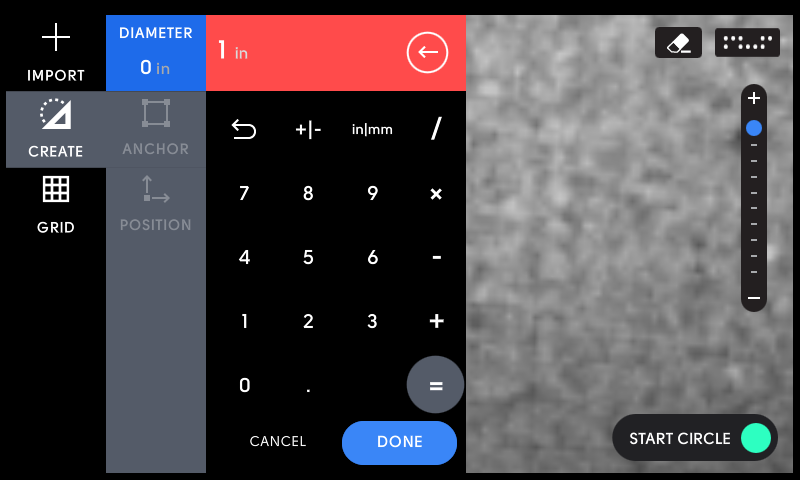
Tap OK when you're satisfied with the diameter of the circle. Then, move Origin around to find the spot where you'd like to place your circle. Tap Place when ready.
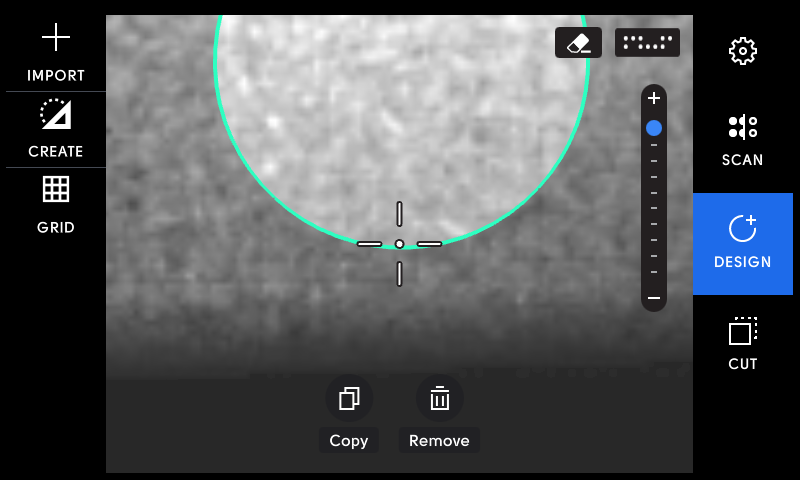
Now that we've placed our circle, it's time to get cutting! Tap Cut on the right to switch to cut mode.
Cut Mode
This is the place where you make your design a reality.
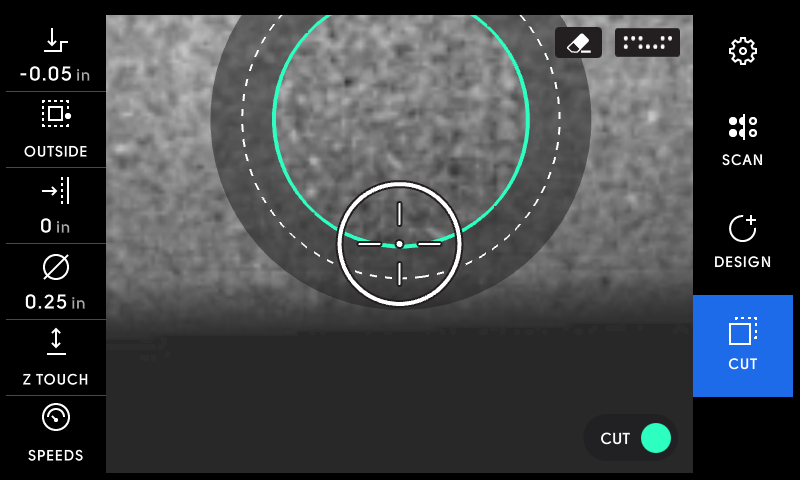
Much like Design mode, moving Origin in Cut mode moves your cursor on the workspace. As you move, designs under your cursor highlight, and the left menu updates to reflect the Cut Type of your design.
Z Touch
If you're already touched off since changing the bit, you can skip this section.
Before we start cutting, we need to tell Origin where the tip of the bit is. Tapping Z Touch will drive the spindle down until the tip of the bit touches the material surface. Origin uses a sensor located on its base, so ensure that Origin is completely over the material surface.
Now, tap Z Touch.
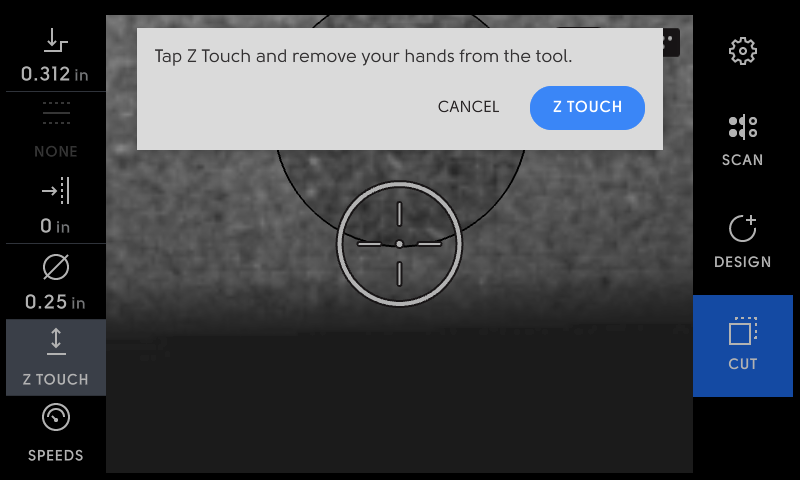
Make sure your hands are not on Origin's handles, as this might cause a failed Z Touch. Tap Plunge when ready.
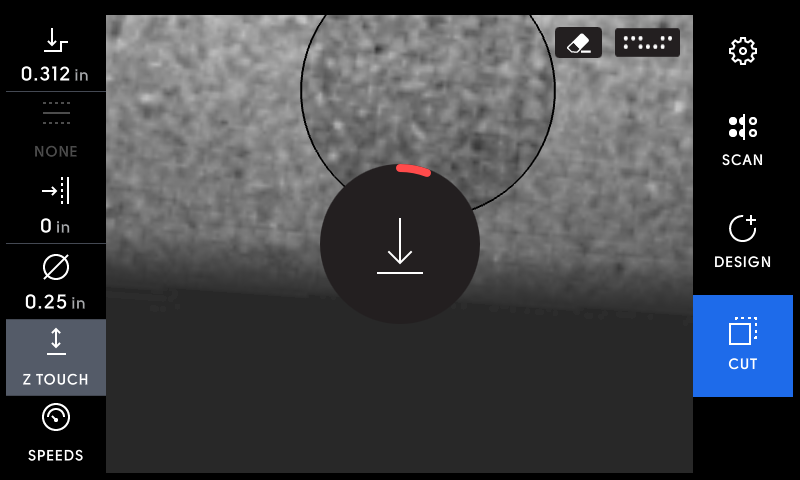
Origin will plunge until it records the bit touching the material surface and then retract. When successful, you'll see a green checkmark.

If a red checkmark appears, ensure the following:
- A bit is installed in the collet
- The spindle is firmly clamped in the spindle mount
- Origin's base is completely over the material surface
- The material surface was not bumped during Z Touch
- Origin can see tape during Z Touch
Aircut
Now, select your circle by moving Origin over it. Running through the following steps you'll perform an Air Cut, a cut that doesn't plunge the bit into your material so you can practice or test your cut before committing to cutting.
Cut Type
You'll see the Cut Type flash to Outside, which is the default for any on-tool shapes. Change this to your desired cut type, whether Outside, Inside, Pocket or On Line.
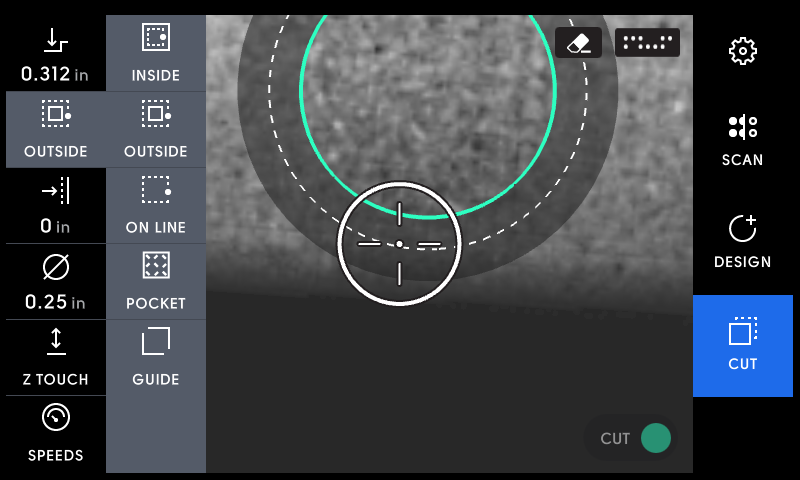
For simplicity's sake, let's keep this setting as the default of Outside.
Bit Size
Now tap Bit Size. This setting is located above Z Touch.
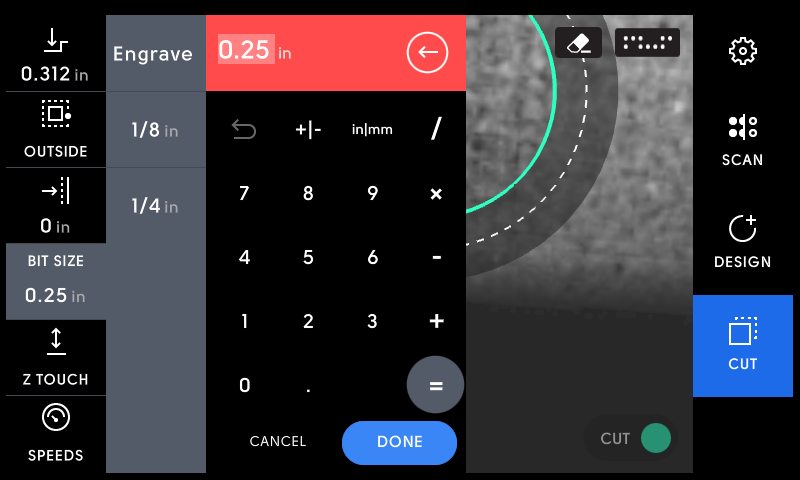
Specify the diameter of the cutter here. For cutters supplied by Shaper, you can use the presets on the left. Once you tap OK, Origin will suggest a Z Touch. Dismiss this if you've already performed a Z Touch since changing the cutter.
Depth
Provide the depth to plunge with this setting.
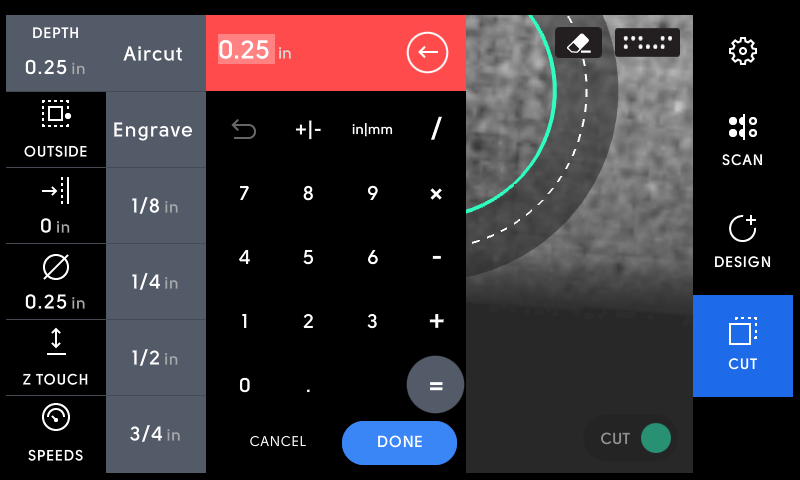
If the desired depth exceeds the diameter of the cutter, Shaper suggests taking multiple passes, each time incrementing by the cutter diameter. This will ensure proper cutter chip load, and result in a higher quality cut with improved safety.
Tap Aircut here so that you can follow the cut on Origin without cutting into your material surface.
Start CuttingLet's take Origin for a spin. Tap Start Cutting or press the green button on the right handle. While Aircutting, turning on the spindle is unnecessary, as we won't be cutting during this step.
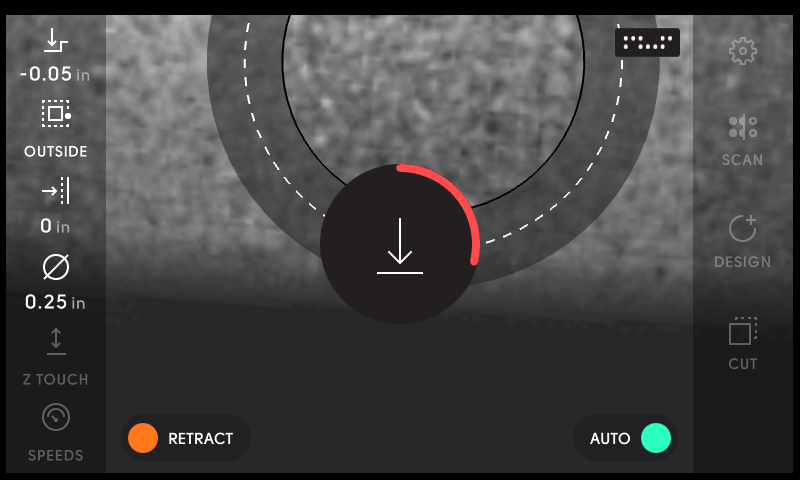
While Origin plunges to the requested depth, it shows a progress bar. During this time, do not move Origin. If you do, Origin will retract to ensure your safety and the safety of your material surface.
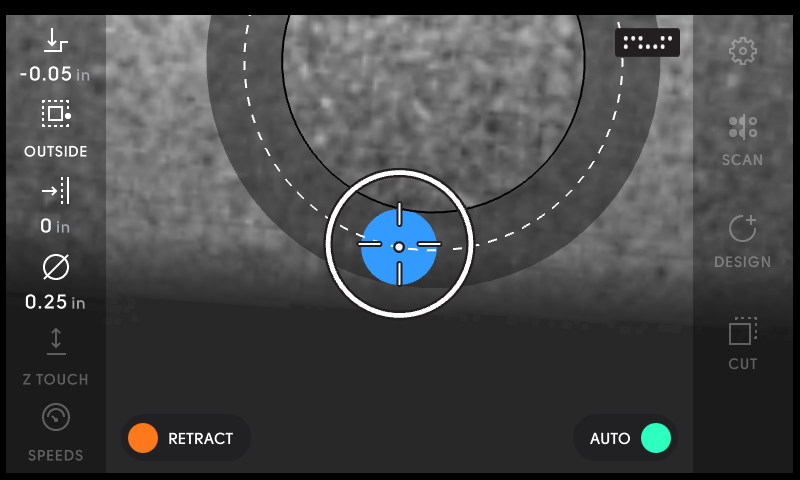
Now that we're plunged, follow the direction of the arrow and cut line dashes. Origin will suggest paths that are conventionally cut rather that climb cut for your safety. In the above image, the small dot indicates where the cutter is, and the outer circle indicates the corrective range. Always keep the small dot inside of the corrective range. If the small dot goes outside of the corrective range, Origin will retract and abort your cut.
With your hands on the handles, move Origin around the path.
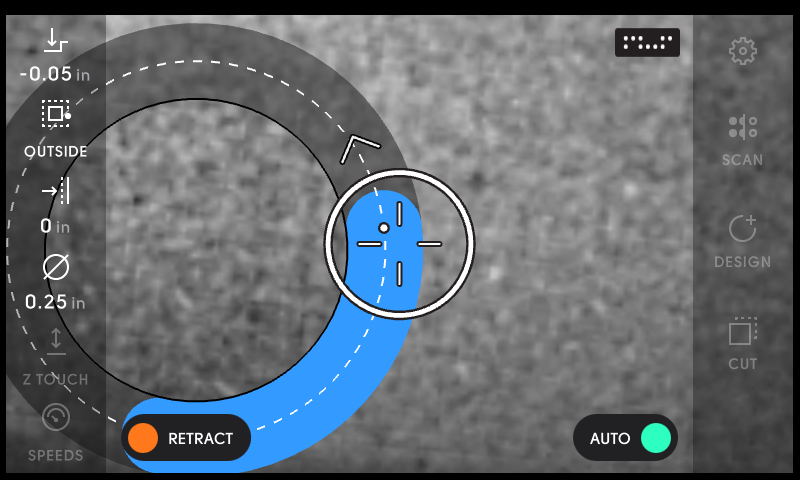
When you reach the start of your cut, tap Retract or press the orange button on the left handle.
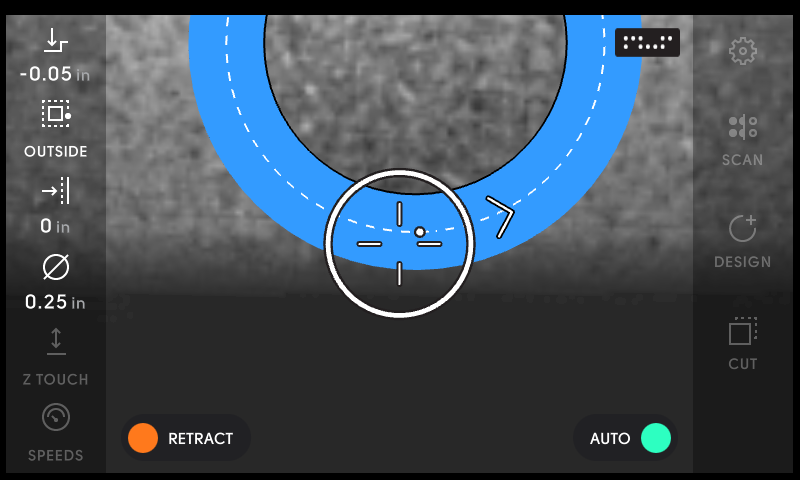
Congratulations! You've made your first Aircut!
Full depth cut
Now, the moment you've been waiting for, let's make some sawdust!
Let's erase the cut history from our Aircut first. Tap Erase Cuts to clear this workspace's history.
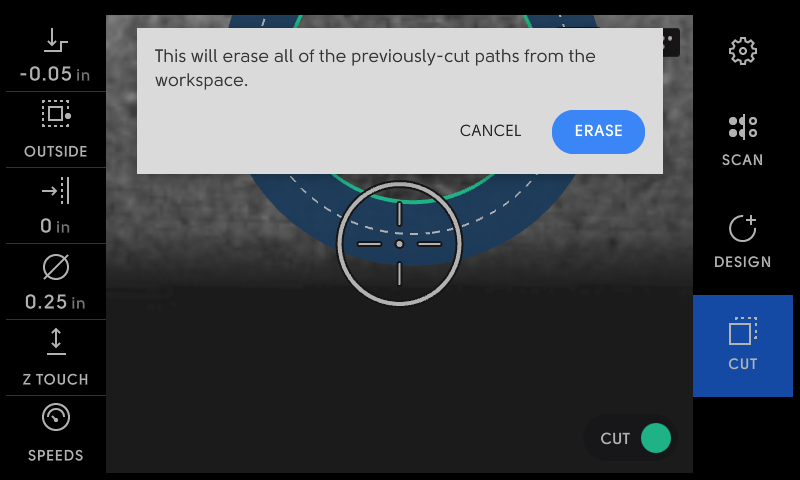
Tap Erase.
Let's return to the Depth setting and select our bit diameter for our first pass. I'll choose 1/4" to start.
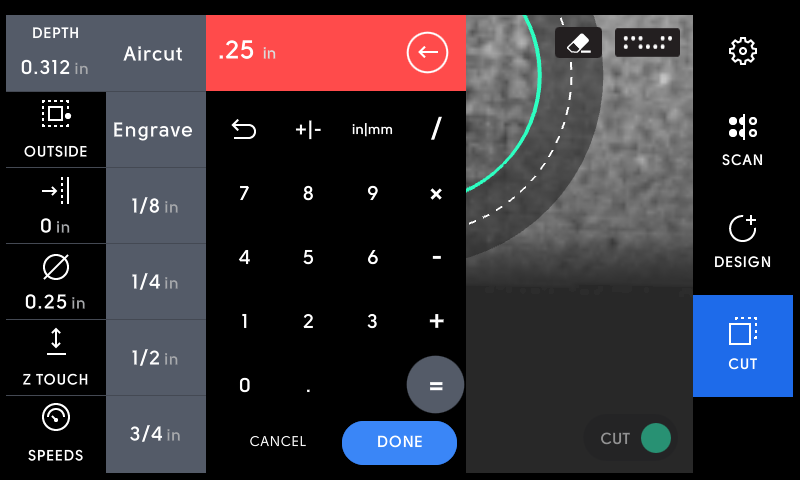
Hover over the cut path, and turn the spindle on.
Ensure that your dust collection is on and the spindle speed is set appropriately. For our 1/4" cutter, we recommend that you set the speed to 5 or 6, but 1 or 2 for our V60 bit.
Tap the green cut button on your tool to start cutting.